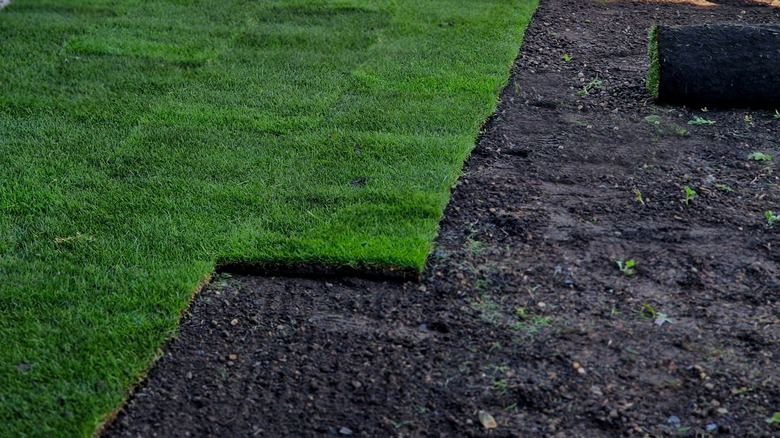Sod Removal Doesn't Have To Be Backbreaking Work If You Incorporate This Clever Hack
We may receive a commission on purchases made from links.
Sometimes, gardening takes a little trial and error as you learn all about companion planting and where exactly you want to place all of your veggies and flowers. Or, you could be starting from scratch, even deciding where you want to place your grass lawn. Instead, you may opt to go with a clever alternative to grass for a no-mow garden, such as a rock or xeriscape garden. Unfortunately, this change sometimes leads to high costs and backbreaking work lifting and moving heavy material like sod. Removing sod yourself is cheap, but not always easy to do. Thankfully, there is a way to reduce the effort and strength you expend removing sod — all you need is a manual edger lawn tool. The ones you want in particular are semi-circle blades made to allow for clean-cut edges, often used around flower beds or between the sidewalk and the rest of your lawn. However, you can also use them for easy removal of sod.
Using the edging tool, you just need to cut the area you want to remove the sod from into neat, easily manageable chunks. For the first few, it's a good idea to go with smaller squares, as you will have to lift them up out of the ground so you can turn them on their side. However, after you create more of an open area to work with, you can brave going a little bigger, as at that point, you can just tip over the square and cut out all the roots.
Removing sod this way actually has two benefits. Not only does it help you work more efficiently, but it helps make the next step in your lawn change easier. Generally, before you plant anything, you have to till the soil and mix in fertilizers. By breaking up the dirt into squares, you start that process early.
What to do with sod after removal
As for what to do with your remaining sod, that is up to you. You can, of course, just toss it. However, in most locations, you cannot simply throw sod into your trash can and call it quits. Sod is heavy, as you probably noticed while removing it from your yard, and the dirt trapped in the roots isn't much lighter. Just a few cuts of sod are more than enough to make your trashcan far heavier than is allowed. Even if you rent a bigger dumpster, you may reach the weight limit far before you throw out all of your sod.
The other option is to load it up in your vehicle and drive it to your nearest landfill, but that can be costly, time-consuming, and lifting the sod again likely isn't something you want to do. Thankfully, there are a few other options you can try before taking it to your landfill. Composting, or reusing it in another part of your yard is likely the easiest option, if you have a need for it, such as patching up your grass with your leftover sod, instead of relying on this clever hack that only requires seed and toilet paper to fix up empty lawn patches.
Alternatively, you may have to be a bit creative. In certain areas, there are sod recycling options. Companies like Habitat for Humanity or Heifer International may take the sod off of your hands if it is in good condition and they need it for a current job, though it isn't guaranteed. Consider asking your neighbors on social media platforms like Facebook or Nextdoor, if anyone needs some sod.

